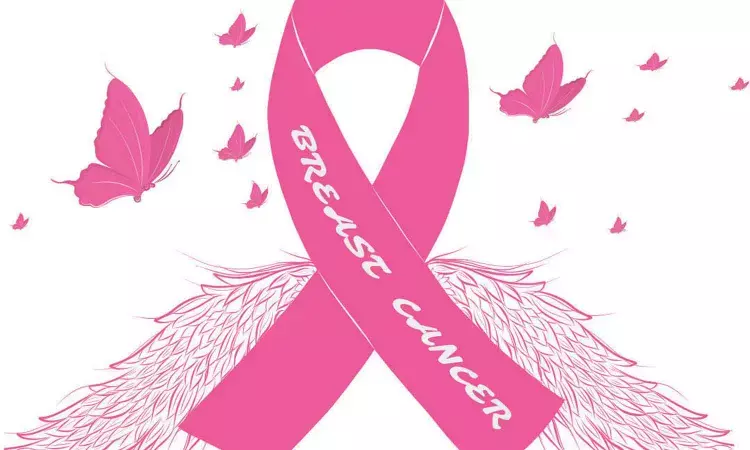- Home
- Medical news & Guidelines
- Anesthesiology
- Cardiology and CTVS
- Critical Care
- Dentistry
- Dermatology
- Diabetes and Endocrinology
- ENT
- Gastroenterology
- Medicine
- Nephrology
- Neurology
- Obstretics-Gynaecology
- Oncology
- Ophthalmology
- Orthopaedics
- Pediatrics-Neonatology
- Psychiatry
- Pulmonology
- Radiology
- Surgery
- Urology
- Laboratory Medicine
- Diet
- Nursing
- Paramedical
- Physiotherapy
- Health news
- Fact Check
- Bone Health Fact Check
- Brain Health Fact Check
- Cancer Related Fact Check
- Child Care Fact Check
- Dental and oral health fact check
- Diabetes and metabolic health fact check
- Diet and Nutrition Fact Check
- Eye and ENT Care Fact Check
- Fitness fact check
- Gut health fact check
- Heart health fact check
- Kidney health fact check
- Medical education fact check
- Men's health fact check
- Respiratory fact check
- Skin and hair care fact check
- Vaccine and Immunization fact check
- Women's health fact check
- AYUSH
- State News
- Andaman and Nicobar Islands
- Andhra Pradesh
- Arunachal Pradesh
- Assam
- Bihar
- Chandigarh
- Chattisgarh
- Dadra and Nagar Haveli
- Daman and Diu
- Delhi
- Goa
- Gujarat
- Haryana
- Himachal Pradesh
- Jammu & Kashmir
- Jharkhand
- Karnataka
- Kerala
- Ladakh
- Lakshadweep
- Madhya Pradesh
- Maharashtra
- Manipur
- Meghalaya
- Mizoram
- Nagaland
- Odisha
- Puducherry
- Punjab
- Rajasthan
- Sikkim
- Tamil Nadu
- Telangana
- Tripura
- Uttar Pradesh
- Uttrakhand
- West Bengal
- Medical Education
- Industry
CVD risk in breast cancer patients can be predicted by CT scans, says study

Netherlands: CT scans of coronary artery calcium (CAC) can help in predicting cardiovascular disease (CVD) risk in patients undergoing treatment for breast cancer, suggests a recent study presented at the 12th European Breast Cancer Conference. Findings from the study are significant for breast cancer patients as early identification of high-risk patients may enable switching to breast cancer treatment that is less cardiotoxic.
Some breast cancer (neo) adjuvant treatments such as trastuzumab, anthracyclines, and (left-sided) radiotherapy (RT) are associated with an increased CVD risk. Breast cancer patients at pre-existing CVD risk are at the highest risk of treatment-induced cardiotoxicity. CAC is a strong independent risk factor and can be quantified on dedicated radiotherapy planning CT scans of the chest.
Automated assessment of CAC scores planned for radiotherapy in breast cancer patients may be helpful for detecting patients at increased risk of CVD. In the Bragatston study, Helena Verkooijen, a professor of image-guided treatment evaluation at the University Medical Utecht in the Netherlands, and colleagues evaluated the association between automated CAC measurement on RT planning CT scans and the CVD risk in breast cancer patients treated with RT.
In this study, CAC scores of breast cancer patients receiving RT were automatically calculated in planning CT scans through the use of a deep learning algorithm. It was then classified into Agatston categories (0, 1-10, 11-100, 101-399, >400 units). Treatment and tumor characteristics were obtained from the Netherlands Cancer Registry. Data on CVD was obtained from Dutch Hospital Data and the National Cause of Death Register. The association between CAC scores and CVD risk was determined using Cox proportional hazard regression models. Stratification for left- vs right-sided RT and treatment with vs without anthracyclines was performed.
The multicenter retrospective cohort study included data from 14,002 patients with a mean age of 58 years (SD=11).
Key findings of the study include:
- Twenty-nine percent of the patients had a CAC score of >0.
- At a median follow-up of 52 months (IQR:27-82), 8% of the patients (n=1138) were admitted to the hospital for CVD and 93 patients (1%) died from CVD.
- After adjustment for age and calendar year at planning CT, the risk of CVD increased with higher CAC, from 5% for patients without CAC to 28% of patients with a CAC score >400.
- The association between a high CAC score and CVD was strongest in patients treated with anthracyclines (HRCAC >400=5.4).
"CAC detected on the RT planning CT is strongly associated with CVD risk. The findings are relevant for breast cancer patients as it can help in patients adopting targeted cardio-preventive interventions and switching to less cardiotoxic breast cancer treatment.
The study, "The risk of cardiovascular disease in irradiated breast cancer patients: the role of cardiac calcifications and adjuvant treatment," was presented at the 12th European Breast Cancer Conference.
Dr Kamal Kant Kohli-MBBS, DTCD- a chest specialist with more than 30 years of practice and a flair for writing clinical articles, Dr Kamal Kant Kohli joined Medical Dialogues as a Chief Editor of Medical News. Besides writing articles, as an editor, he proofreads and verifies all the medical content published on Medical Dialogues including those coming from journals, studies,medical conferences,guidelines etc. Email: drkohli@medicaldialogues.in. Contact no. 011-43720751


